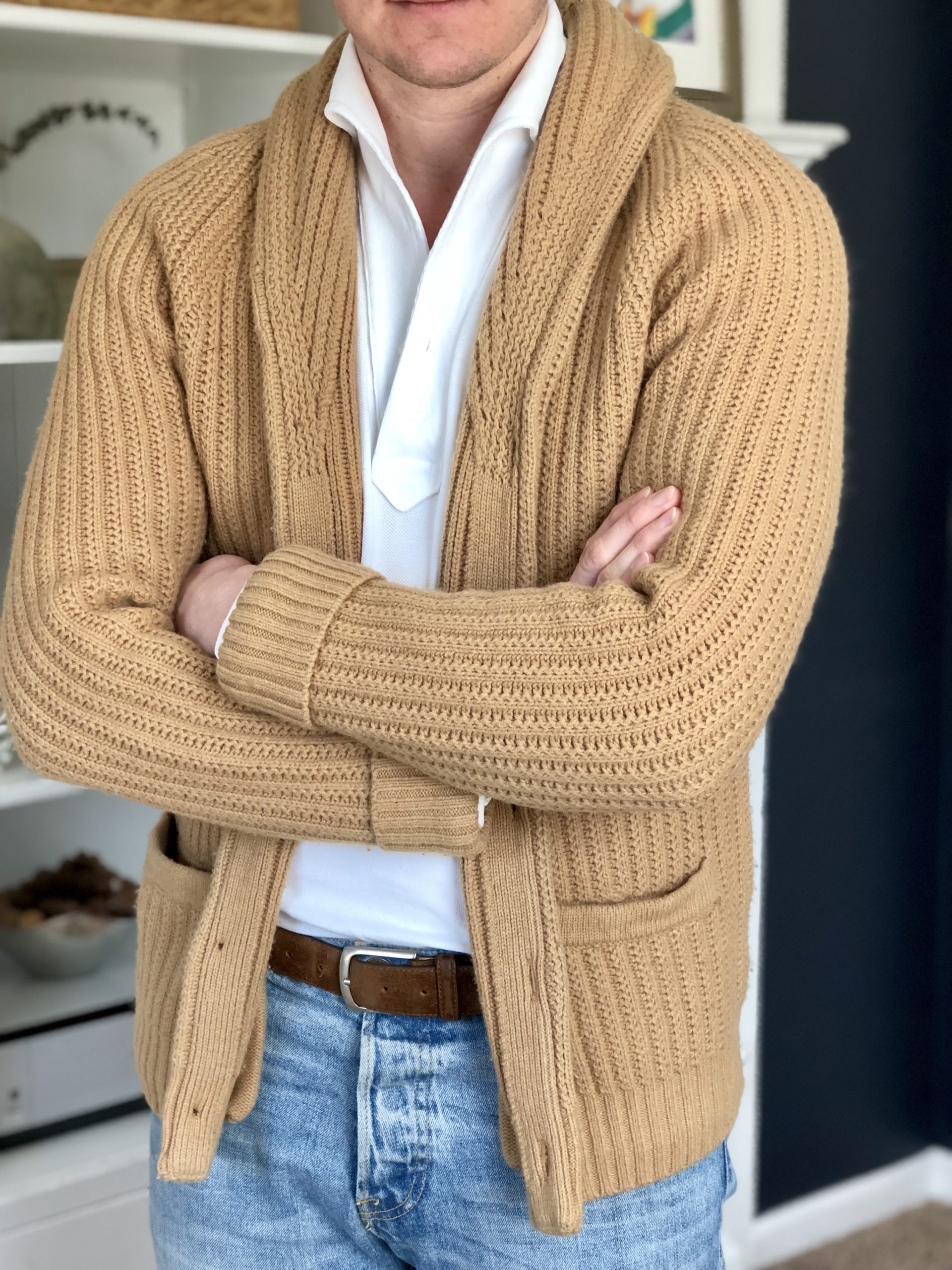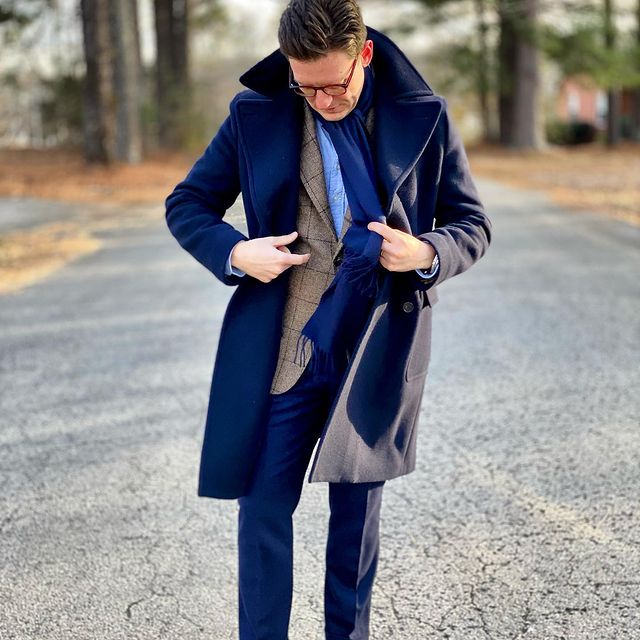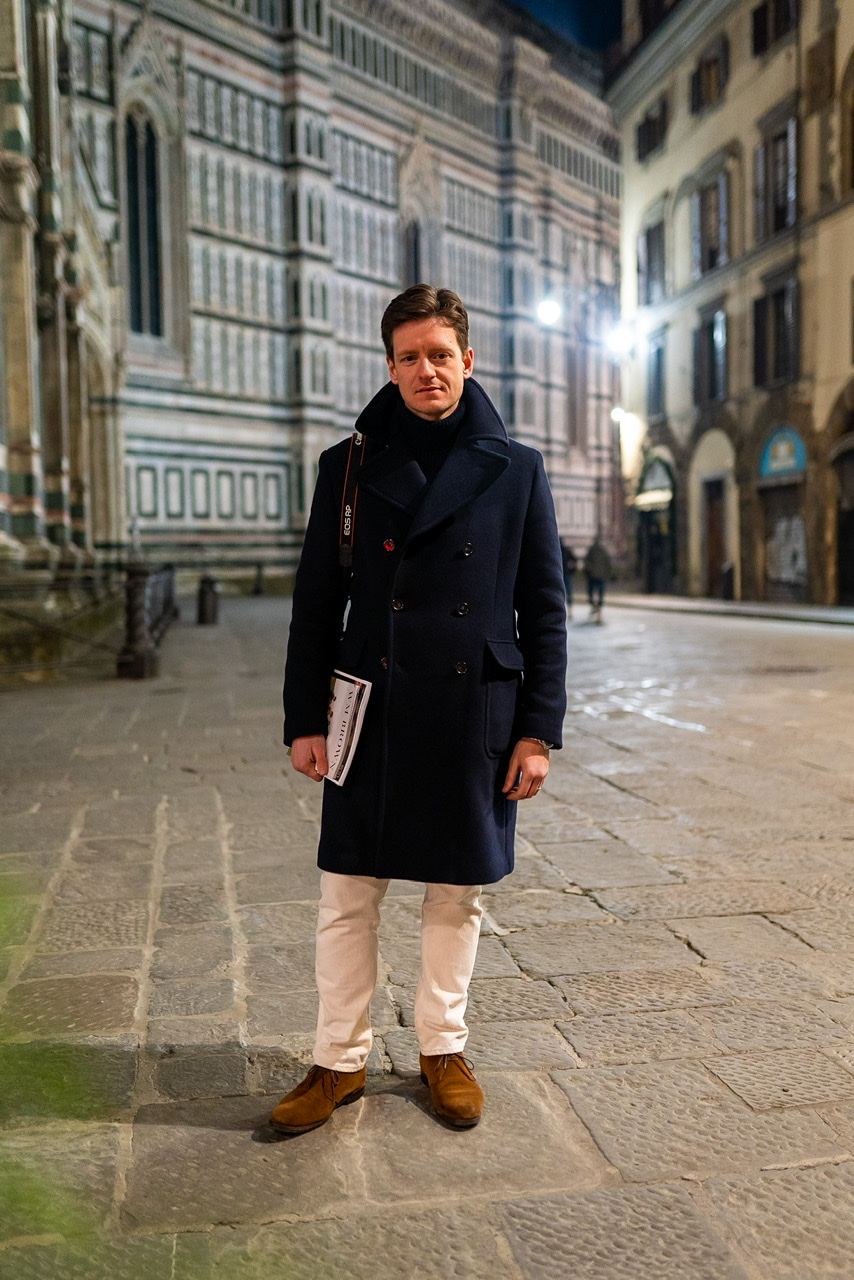
Mitchell Moss in a sportcoat and flannel trousers from Natalino.
In a clip on her Netflix series “Pretend It’s a City,” writer (and proud Anderson and Sheppard customer) Fran Lebowitz is asked whether she attributes her sense of humor to nature or nurture. Fran replies, “There wasn’t much nurture of it, I assure you.” Lebowitz means she wasn’t encouraged to be funny; that growing up in the 1960s, being funny wasn’t a character trait society wanted in a woman. Of course, she built her career (and, eventually, paid for those A&S jackets) by being funny, acerbic, and amusingly cranky.
Some people may be born with a sense of style — for the rest of us, though, style can, in fact, be nurtured. Developing yours, and building a wardrobe, can be daunting, and even discouraging, especially when we first start out. First of all, most of us can’t go to Anderson and Sheppard and rely on their guidance (or ignore it, as Lebowitz has on occasion). We rely on guideposts of style we want to emulate: whether that’s parents, characters in literature or film, magazines, websites, Instagram.
Many resources (including this one) will advise you to focus on basics — navy jackets and suits, white or blue shirts, gray flannel or khaki cotton trousers, decent lace-up shoes, and versatile accessories. Even post-dress-codes, these items will serve you well in many situations, sort of like a decent sense of humor.
Mitchell Moss, an editor in the Nashville area, is an excellent style guidepost. He sets a really useful and accessible example of finding a lot of range in tailored clothing without going full Pitti Uomo (even though Mitchell has, in fact, been to Pitti Uomo). Mitchell has a tremendously consistent style, taking advantage of some core colors and silhouettes. Much of his wardrobe uses blues, grays, browns, and other neutrals, with shirts almost exclusively in the blue family. He also relies on makers that allow him to blend Italian and European influences (soft tailoring, print scarves, suede footwear) with American style (denim-adjacent shirts, five-pocket pants).

At first, that could sound limiting, but Mitchell’s combinations are interesting in part because he doesn’t necessarily make the easy choice for each piece. Rather than ten blue oxford OCBDs, he has a number of different stripes and denim/chambray, as well as a handful of collar styles, all of which are reasonably classic. He’s not a Batman’s-closet sort of dresser, with a rack of the same garments, but his tailored outfits are recognizably his.
As a dad of young kids, I can say the fact that Mitchell continues to build an interesting tailored wardrobe with a growing family at home (and during a pandemic) is even more impressive. His blog and Instagram are also great examples because photos are clear and well-lit, attributable to the photographer’s skills — Mitchell’s wife, Dana Moss.
Mitchell told me his approach to clothes is that they should make you look good, feel cool, and express your personality/personal style at some level. “Tailoring is great for #1 without a doubt; it can definitely do #2, but it’s not without its pitfalls there; and for #3, that’s up to you.”
His three key tips for guys starting out in tailoring:
- Focus on finding a tailoring style that is flattering to your body type
- Dress for yourself, but be honest about the circumstances you’re in
- Don’t let the enthusiasts ruin your enthusiasm

According to Mitchell, “The rage is soft tailoring inspired by or made in Naples, but not every guy looks good in that. Be honest with what looks the best on you, even if what you want to wear isn’t it.” Mitchell suggests taking advantage of Instagram or menswear forums to get opinions on whether certain choices, “like jacket length, shoulder expression (soft? Spalla camicia? Roped? Padded? Extended? Narrow?), lapel width, gorge height, etc.” are good fits for your body.
Mitchell also recommends reading the style room, so to speak. “You know how every 4-6 years some fashion label decides to try and ‘bring camo back’? Well, guess what, I live in rural Middle Tennessee. If I wear camo, I’m just another “Person of Walmart.” On the other end of the spectrum, wearing a full-blown suit and tie might seem a little silly unless I’m on a date with my wife or going to church.”

“So for me dressing the way I want means soft tailored jackets paired with denim (often white or off-white), an open-collared shirt, and suede loafers or ankle boots. The tailored jacket is flattering, so I look good; I feel cool because I like how I look and get satisfaction out of the details of the jacket; and I’m expressing my personal style through my choices of fabrics, colors, aesthetic, silhouette, etc.”
While Mitchell acknowledges enthusiast forums are a useful resource, he’s wary of rules and tropes that become gospel by virtue of being repeated. “I’ve been getting a little bit more into wristwatches lately, [eds. note; unsurprisingly, Mitchell has great taste in watches — check out his Instagram] and seeing all the little bits of received wisdom/groupthink in the online watch world that have built up over the years has helped me gain perspective on the online men’s style community, which has its own share of received wisdom/groupthink.”
“There’s a lot to learn that will help you look better if you know it,” says Mitchell. “But there comes a moment after you’ve figured all that out when you realize that good taste evolves just as language does. That includes tailoring, and while there are many examples of people trying to do something clever and failing, that doesn’t mean you can’t remix things in your way and land on something unique that looks great, makes you feel cool, and expresses your personal style.”








